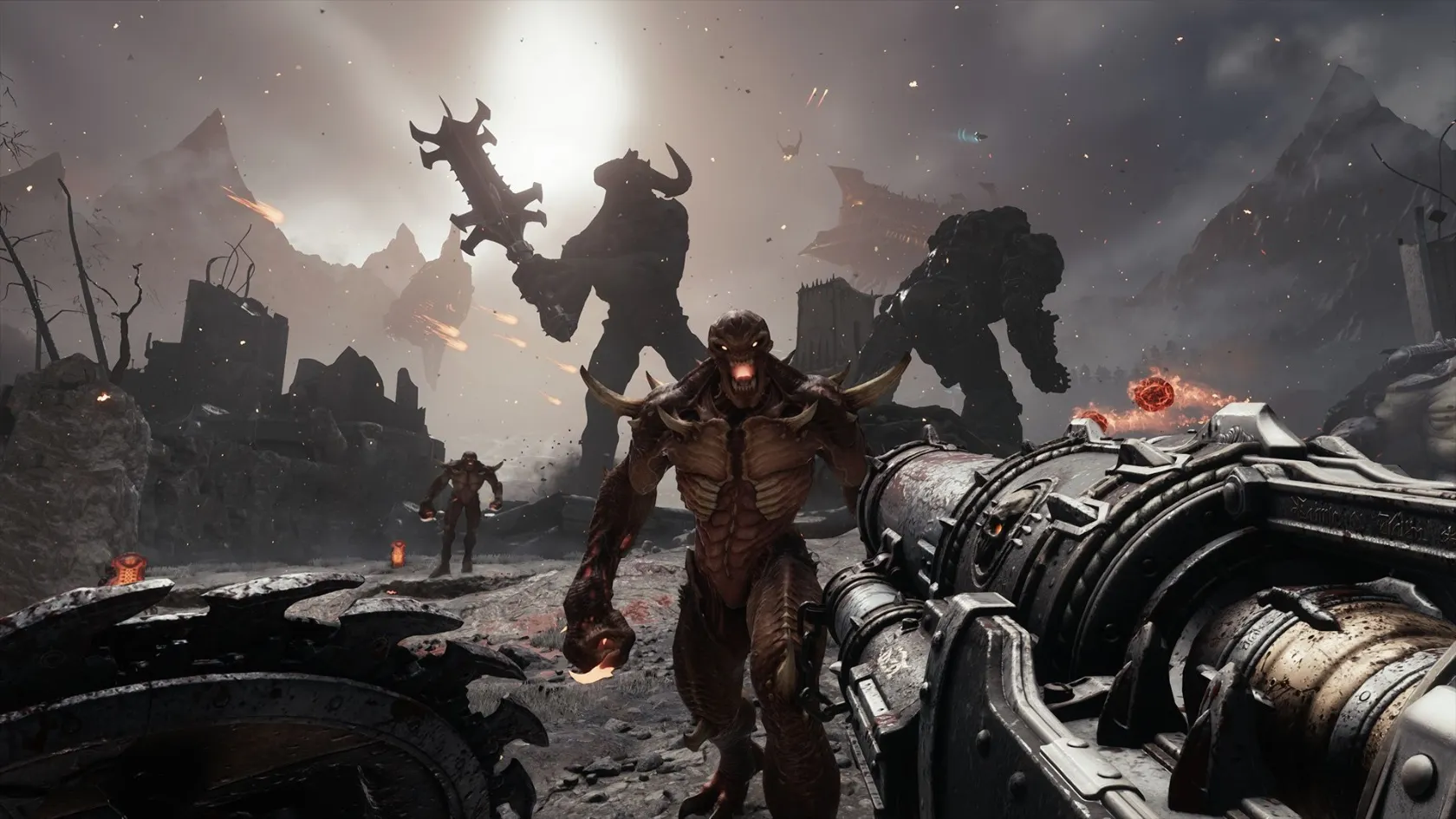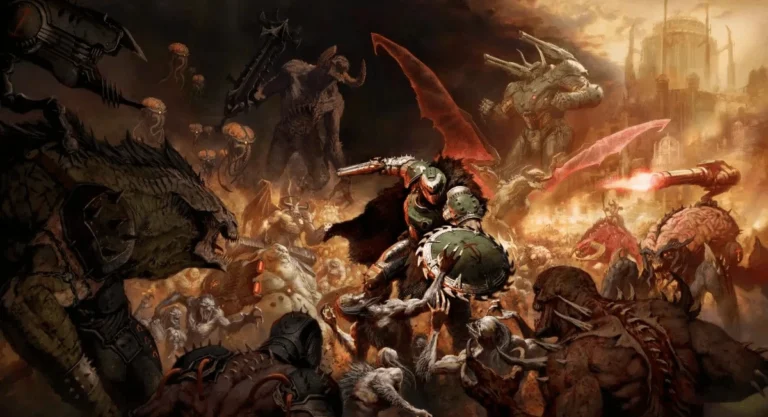The beginning of the calendar year is typically a quiet time for the gaming industry. However, 2025 has kicked off with a surprising amount of energy, thanks to events like CES 2025, which brought exciting innovations for gaming tech. On top of that, Microsoft’s Developer_Direct featured four diverse and visually stunning games that ramped up anticipation for what’s to come.
Among these, Doom: The Dark Ages stood out the most—not just for its gritty aesthetic and brutal combat, but for its groundbreaking use of next-gen graphics technology. Digital Foundry’s latest episode of DF Direct Weekly focused heavily on the game’s visuals and performance, praising it as a technical masterpiece.
The New Face of idTech: Redefining Game Engines
Powered by a new and massively upgraded version of the idTech engine, Doom: The Dark Ages is built to push next-gen hardware to its limits. The PC version in particular is expected to be a visual showcase, and its CES 2025 demo highlighted the impressive use of Path Tracing—an advanced lighting technique that adds depth and realism to every scene.
While the Developer_Direct demo seemed closer to console visual standards, it still looked stunning. This is id Software’s first truly next-gen game, and it’s designed to fully utilize modern hardware, from high-speed SSDs to real-time ray tracing.
Bigger, Faster, Deadlier – What Makes This Doom Different?
The biggest leap in Doom: The Dark Ages is scale. Compared to previous titles, levels are massive, traversal is much faster, and world detail has been significantly ramped up. Marty Stratton of id Software described the game as a “dramatic leap in environmental detail and immersion” over Doom Eternal and idTech 7.
To put it simply:
“Smarter AI, more detailed geometry, increased violence, and more destruction.”
These aren’t just buzzwords. Doom: The Dark Ages is tackling the complex problem of streaming highly detailed environments at rapid speeds while maintaining fluid gameplay. Thanks to new super-fast level streaming technology, the game nearly eliminates loading screens, allowing for a seamless and uninterrupted experience.
A Semi-Open World Approach
For the first time in the franchise’s history, Doom is taking steps toward semi-open-world design. The campaign features the largest playable environments in Doom history, offering players the freedom to explore side content beyond the main objectives.
Stratton explains:
“As with any game, the experience depends on how you play—but this is undoubtedly the biggest and most ambitious campaign we’ve ever made.”
Next-Level Visuals – But You’ll Need the Hardware

Like Indiana Jones and the Great Circle, this game demands a powerful GPU with hardware-based ray tracing support. PC gamers who want to enjoy the game’s visual excellence will likely need to upgrade their setups. Even the recommended specs for 1080p at 60FPS on Low settings include an RTX 2060 Super, showing how graphically intense this game is.
Recommended System Requirements: A Closer Look
Digital Foundry highlights how id Software offers flexible graphic options, making the game playable even on consoles like Xbox Series S. However, if you want to experience the game with full ray-traced lighting and shadows, you’ll need a capable setup.
For 1080p / 60FPS on Low, id recommends:
- CPU: Ryzen 7 3700X or Intel Core i7-10700K
- GPU: RTX 2060 Super
- RAM: DDR4 recommended
For Ultra settings at 4K, the game scales up to:
- CPU: Ryzen 7 5700X or Intel Core i7-12700K
- GPU: High-end RTX cards (4000 series or higher recommended)
- RAM: DDR5 ideal
It’s clear that the Intel chips offer stronger performance, especially when paired with fast DDR5 memory.
Path Tracing, Real-Time Lighting, and Material Detection
The game leverages Path Tracing for ultra-realistic lighting, enabling dynamic illumination and shadows that react to both player behavior and environmental changes. Even the gameplay mechanics incorporate ray-traced material recognition, making destruction feel physically believable.
While Digital Foundry hasn’t yet tested the game at maximum graphical settings, early indicators suggest this will be a major benchmark for high-end gaming PCs, especially NVIDIA GPU users.
Performance Worries? Not Really
The game’s fast-paced shooter gameplay could raise concerns about performance drops when using heavy lighting effects like ray tracing and denoising. However, thanks to DLSS Multi-Frame Generation, stable high framerates seem achievable even with all settings maxed out. The real question is whether MFG will blend smoothly with Doom’s lightning-fast gameplay—Digital Foundry seems optimistic.
Environmental Destruction: The New Frontier
Compared to Doom Eternal, there’s a clear focus on real-time destruction and object physics in The Dark Ages. The pre-baked lighting systems have been scrapped, allowing all environmental elements to react naturally to gameplay, similar to the physics system seen in Crysis.
Console Version Still Under Wraps – But It’s Promising
While Digital Foundry hasn’t tested the console versions yet, they’re confident in id Software’s proven ability to optimize. A smooth 60FPS experience is expected across Xbox Series X, Series S, and PlayStation 5, despite the game’s intense graphical features.
Release Date and Platforms
Doom: The Dark Ages will launch on May 15, 2025 (25 Ordibehesht 1404) for:
- Xbox Series X | S
- PlayStation 5
- PC
And will be available day-one on Xbox Game Pass.
Final Thoughts – A New Technical Milestone for id Software
With massive levels, no loading screens, realistic physics, and next-gen visuals, Doom: The Dark Ages looks set to become id Software’s most ambitious game yet. Whether you’re playing for the intense combat or simply to stress test your RTX 4090, this is one game to watch closely.
